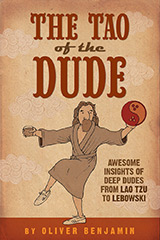References
Austin, B.A. (1981). Portrait of a cult film audience: The Rocky Horror Picture Show. Journal of Communication 31(2), 43.
Auter, P.J. (1992). TV that talks back: An experimental validation of a parasocial interaction scale. Journal of Broadcasting & Electronic Media, 36(2), 173-181.
Bell, C. (2006). Dumbledore’s army: Exploring the church of Harry Potter. A paper presented at the Popular Culture Association of the South Conference. March 30, 2006.
Brooker, W. (2002). Using the force: Creativity, community and Star Wars fans. New York: Continuum.
Brown, J.A. (1997). Comic book fandom and cultural capital. Journal of Popular Culture, 30(4), 13-31.
Brown, W.J. and Fraser, B.P. (2004). Celebrity identification in entertainment education. In A. Singhal, M.J. Cody, E.M. Rogers, and M.Sabido (eds.), Entertainment-education worldwide: History, research and practice (pp. 97-116). Maywah, N.J.: Lawrence Erlbaum Associates, Inc.
Cavicchi, D. (1998). Tramps like us: Music and meaning among Springsteen fans. New York: Oxford University Press.
Clark, L.S. (2003). From angels to aliens: Teenagers, the media, the media and the supernatural. New York: Oxford University Press.
Evans, J.R. and Mathur, A. (2005). The value of online surveys. Internet Research 15(2), 195-219.
Fraser, B.P. and Brown, W.J. (2002). Media, celebrities, and social influence: Identification with Elvis Presley. Mass Communication and Society, 5(2), 183-206.
Granello, D.H. and Wheaton, J.E. (2004). Online data collection: Strategies for research. Journal of Counseling and Development, 82(3), 387-393.
Hills, M. (2002). Fan cultures. New York: Routledge.
Hills, M. (2000). Media fandom, neoreligiosity, and cult(ural) studies. The Velvet Light Trap, 46, 73-84.
Jenkins, H. (1992). Textual poachers: Television fans and participatory culture. New York: Routledge.
Jenkins, H. (2006). Fans, bloggers, and gamers: Exploring participatory culture. New York: New York University Press.
Jenkins, H. (2006). Convergence culture: Where old and new media collide. New York: New York University Press.
Kaplowitz, M.D., Hadlock, T.D., and Levine, R. (2004). A comparison of web and mail survey response rates. Public Opinion Quarterly, 68(1), 94-101.
Obst, P., Zinkiewicz, L., Smith, S.G. (2002). Sense of community in science fiction fandom, part 1: Understanding sense of community in an international community of interest. Journal of Community Psychology, 30(1), 88-102.
Pattacini, M.M. (2000). Deadheads yesterday and today: An audience study. Popular Music and Society, 24(1), 1-14.
Reysen, S. (2006). Secular verses religious fans: Are they different?: An empirical study. Journal of Religion and Popular Culture, 12, 1-12. (Accessed April 16, 2007 via http://www.usask.ca/relst/jrpc/art12-secularvsreligious-print.html).
Shefrin, E. (2004). Lord of the Rings, Star Wars, and participatory fandom: Mapping new congruencies between the internet and media entertainment culture. Critical Studies in Media Communication, 21(3), 261-281.


My husband and i came here since this particular journal had been tweeted by a female I had been following and am pleased I made it here.